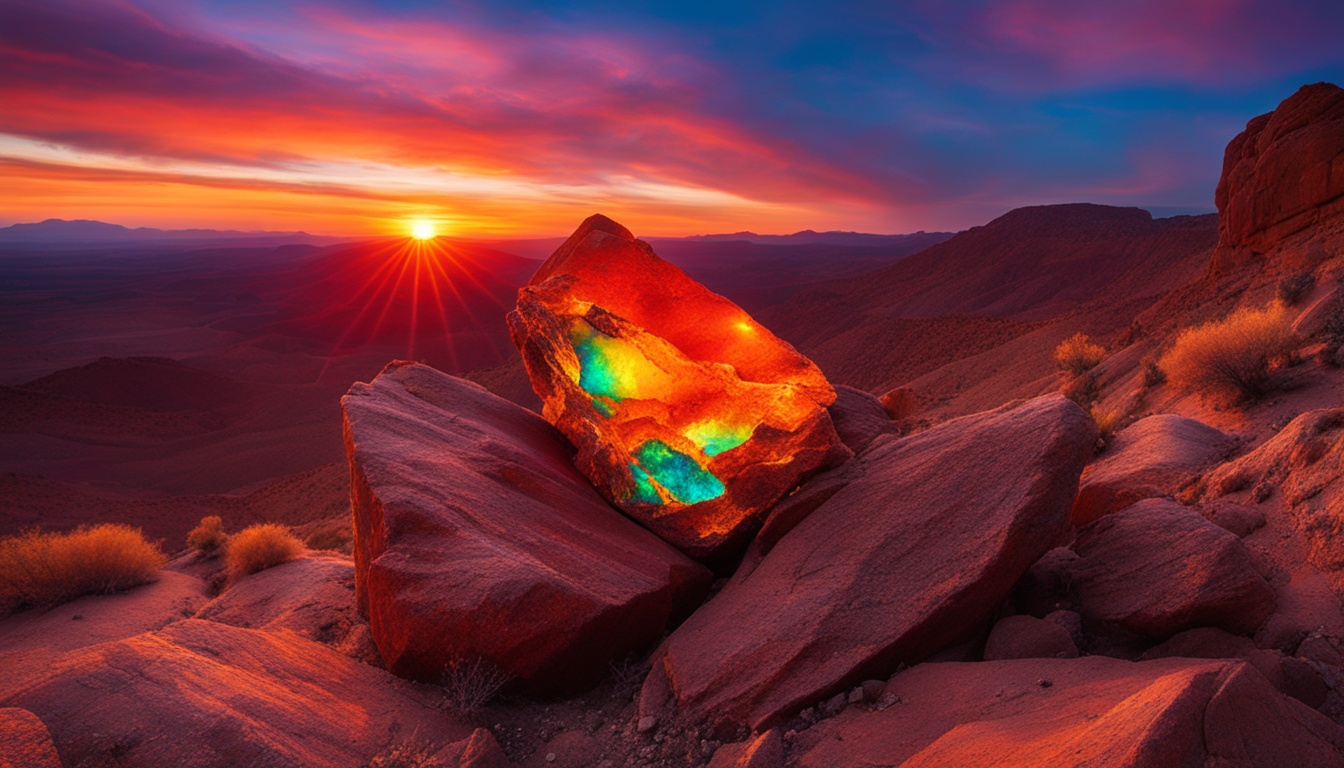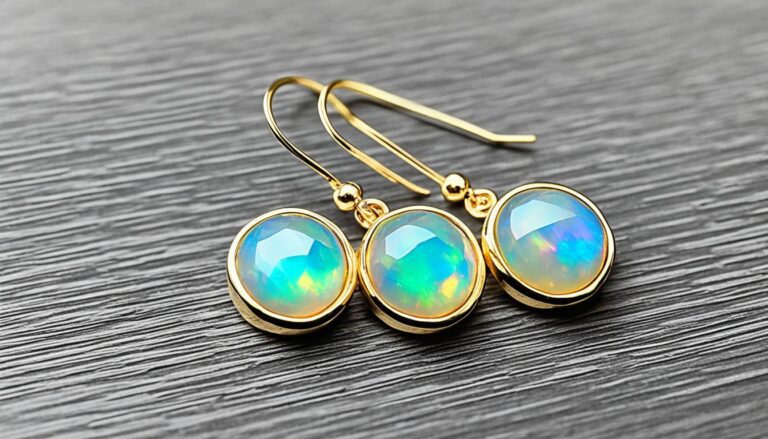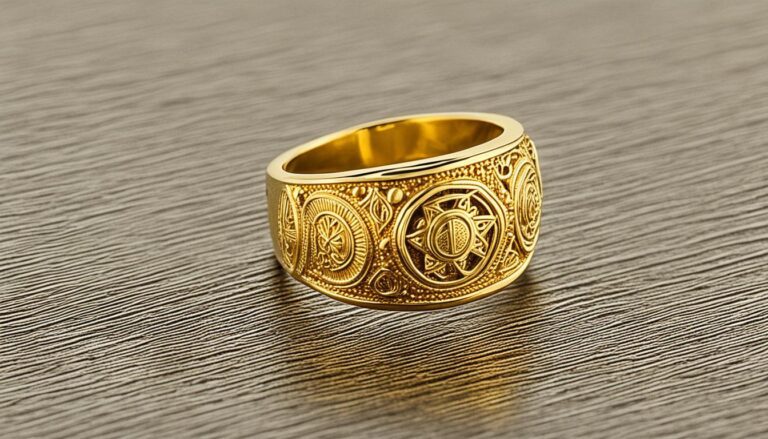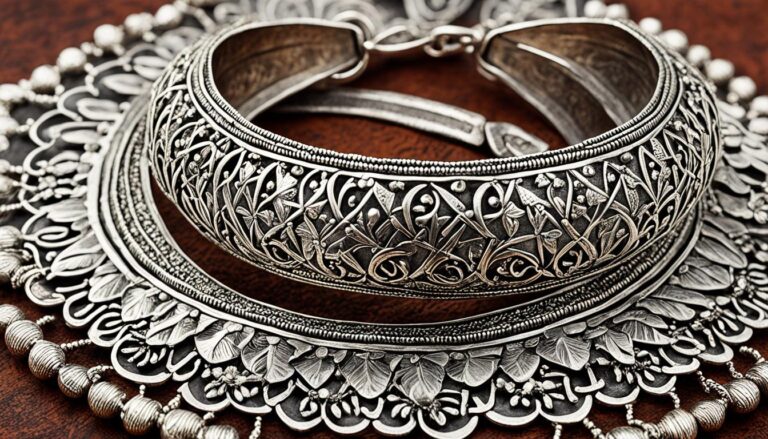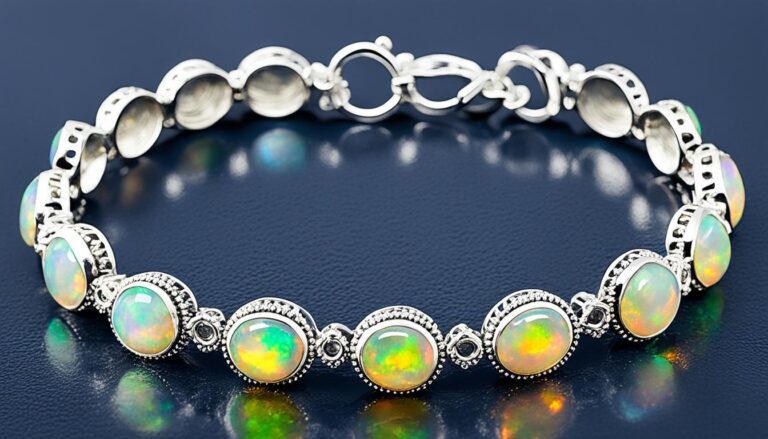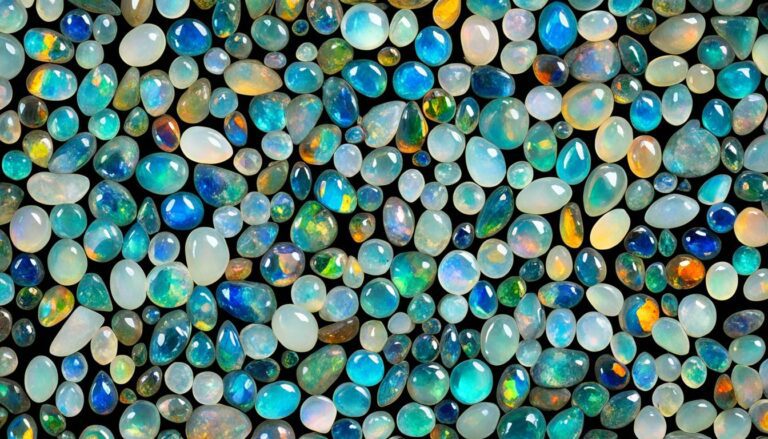Where Do Ethiopian Opals Come From
Welcome to our journey into the amazing world of Ethiopian opals. We’ll explore where they come from, the mining areas in Ethiopia, and what makes them special. If you love jewelry, collect gems, or are just curious, come along and learn about Ethiopian opals.
Ethiopian opals, or Welo opals, come from the colorful lands of Ethiopia. The Welo Province in the north is famous for its opal mines. Since their discovery, Ethiopia is now a key opal provider, after Australia. The opal finds in 1994, 2008, and 2013 boosted Ethiopia’s status in the opal trade.
One big thing about Ethiopian opals is their play-of-color. They dazzle with patterns like a kaleidoscope. These opals can be clear, white, yellow, orange, or brown. They’re not just beautiful; they’re also more affordable than Australian opals. This makes them a favorite for many people.
We’ll look at the history of Ethiopian opals, the different kinds, and how they’re mined. We’ll also see what makes them so unique and why they matter in culture. Join us as we dive into the world of Ethiopian opals. There’s so much to discover!
A Short History of Ethiopian Opal
In the vibrant world of gemstones, Ethiopian opals have a compelling story. Their history begins in the early 1990s in Ethiopia. This country is famous for its beautiful natural scenery. The discovery of opals in the Menz Gishe District in 1994 thrilled gemstone lovers around the world.
The opals from this district are often called “Shewa opals” or “Mezezo opals.” Yet, a major breakthrough for Ethiopian opals happened in 2008. Near Wegel Tena in the Wollo Province, an amazing opal find occurred. This find introduced Welo opals to the global market.
Welo opals stand out for their amazing play-of-color. They shimmer with colors like bright reds, oranges, and deep blues. This discovery confirmed Ethiopia as a key opal source. It brought fresh excitement about these stunning gemstones.
In 2013, Ethiopian opal history was extended with a new discovery. This added to the country’s growing legacy of producing unique and high-quality opals. Ethiopia continues to showcase its varied geology and the beauty of its opals to the world.
Opal Discoveries in Ethiopia
Today, attention is focused on Ethiopian opal mining areas like Shewa and Wollo Provinces. The opal finds here have delighted gemstone fans globally. Ethiopian opals, with their unique colors and patterns, are becoming a top choice.
The intriguing story and the rich sources of Ethiopian opals make them truly special. They are a wonderful choice for collectors, designers, and anyone who appreciates beauty. In each Ethiopian opal stone, a world of stunning color awaits.
Types of Ethiopian Opals
Ethiopian opals come in many types and colors. The Welo opals, also called Wollo opals, stand out. They show a rainbow-like play-of-color. Colors vary from clear white to yellow, orange, and brown.
The Shewa Province is home to Shewa opals. They usually have a body color of brown, red, or orange.
Black opals are found in Ethiopia too. They have a gray to black, see-through body color. Some Ethiopian opals are orange, yellow, or reddish with a play-of-color. These are called “precious fire opals.”
Mining of Ethiopian Opals
Opal mining in Ethiopia uses both surface and underground methods. This way, miners can get these beautiful stones. In the Welo Province, opals can be found in layers of volcanic rocks. Miners dig short, horizontal tunnels into the valley walls. They carefully move through rocks that break easily. This lets them get to the opal deposits safely.
Looking for opals is an exciting journey that needs skill and hard work. While we don’t know the full scope of Ethiopia’s opal mines, we think they cover many kilometers. This means more opal finds in the future.
In the Shewa Province, the mining process is quite similar. But here, opals are hidden in layers of igneous rock. Our skilled miners are always digging, looking for these gorgeous gems.

Characteristics of Ethiopian Opals
Ethiopian opals stand out because of their unique features. They are known for a special design called the honeycomb pattern. This pattern makes them very attractive and popular among gemstone collectors.
These opals also have a wide range of colors. They come in warm yellows, oranges, milky whites, and clear tones. This variety makes them a top pick for people who love jewelry and its natural beauty.
Unveiling the Honeycomb Pattern
The honeycomb pattern in Ethiopian opals is unique and beautiful. It looks like a network of hexagons. The play-of-color, when light shines on them, is enchanting. It’s because of how the opal’s structure and silica spheres interact, creating a colorful dance.
A Kaleidoscope of Base Tones
The base tones of Ethiopian opals are truly diverse. Warm yellows and vibrant oranges bring sunshine and energy. Milky whites and clear tones add elegance and charm. This variety offers endless options for stunning jewelry.
Ethiopian opals shine in all kinds of jewelry. They are perfect for pendants, rings, or earrings. With their stunning pattern and range of colors, they are a special choice for any jewelry lover.
Durability of Ethiopian Opals
Ethiopian opals are unique because they can absorb water. This makes them change in color and transparency. But, it’s important to know that they might crack if they absorb too much water.
So, don’t put these opals in water or where it’s damp. If they get wet, dry them completely before putting them away or wearing them.
Getting them wet from a little splash is usually okay. They’ll dry out and look normal again. But, make sure they’re fully dry before you put them away.
Avoid touching Ethiopian opals with oily or lotion-covered hands. These things can stop them from drying out properly. This advice will help your opals last a long time and stay beautiful.
Ethiopian Opals vs. Australian Opals
Ethiopian and Australian opals are often compared. They both have unique qualities, such as a wide range of colors and patterns. This makes them very popular in the opal market. While Australian opals have always been seen as high quality, Ethiopian opals have become known for being beautiful and affordable.
Australian opals are famous for their amazing play-of-color and brightness. They can be very expensive, especially the very rare pieces. These opals are known for being tough and lasting a long time.
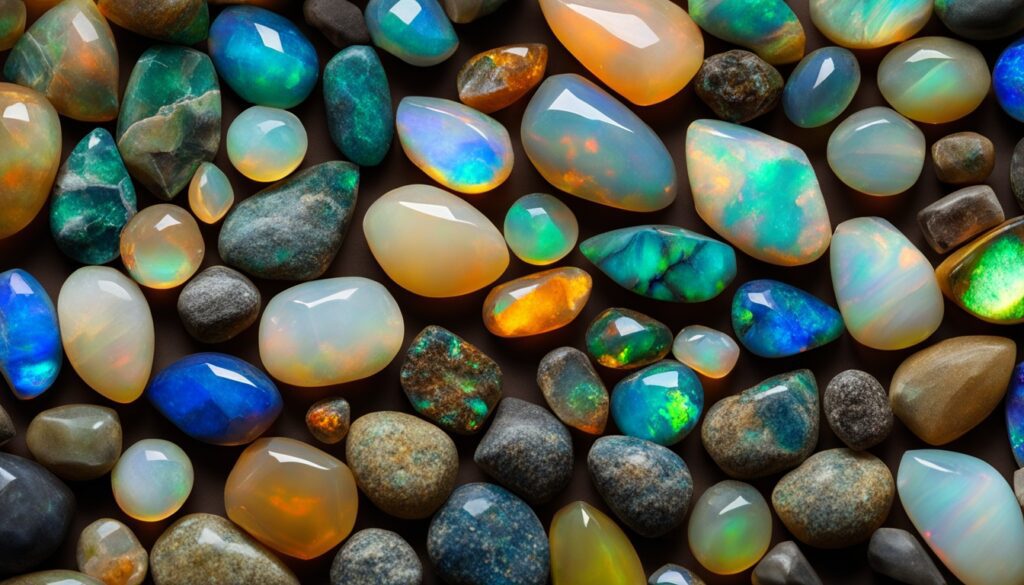
However, Ethiopian opals offer a more pocket-friendly option while still keeping a good quality. The top-notch Ethiopian opals shine just like Australian opals. This makes them a great choice for anyone wanting to add opals to their jewelry.
One great thing about Ethiopian opals is the wide variety of colors and patterns they come in. You can find them in colors like warm yellows, vibrant oranges, milky whites, and crystal clear shades. This offers a rich choice for both jewelry makers and buyers. Additionally, they often show a cool honeycomb pattern, which collectors love.
It’s true that Ethiopian opals are becoming more popular. However, Australian opals still have a very strong reputation for their quality. Their long history and the way they keep their color make them very desirable.
So, when choosing between Ethiopian and Australian opals, it really depends on what you value more. Ethiopian opals are great for those on a budget who still want something pretty. Australian opals are for people who want the best quality and don’t mind paying more. Both bring a lot of beauty and joy to opal enthusiasts around the world.
Trade and Market Impact of Ethiopian Opals
Ethiopian opals have changed the global opal market significantly. Their beauty and not-so-high prices have won over many fans and collectors. People love them for their bright colors and various patterns.
In the past, Australia was the top spot for opals. But now, Ethiopian opals are gaining ground, even among Australia’s own. People from all walks of life, including those just getting started, are falling in love with these stones. They’re especially popular as collectibles and for anyone born in October.
Now, Ethiopia is a big name in opal production, challenging Australia. The world’s growing love for these opals has put Ethiopia on the opal map. Its mines are working hard, supplying high-quality opals to meet the demand.
Why are Ethiopian opals such a hit? They are budget-friendly and oh so pretty. They draw in collectors, designers, and fans because of their wide range of colors and shapes. The world is taking notice, giving Ethiopia top marks in opal production.
What’s next for Ethiopian opals? They are sure to keep shining in the global market. Their mix of being affordable and beautiful makes them appealing to many. These opals have not only changed the jewelry game but also marked Ethiopia as a major player in the opal world.
Cultural Significance of Opals
Opals are more than pretty gems; they symbolize beauty, strength, and mystery for many cultures. They were treasured by ancient people and traded far and wide, as seen in digs in East Africa. Legend says the Queen of Sheba delivered opals to King Solomon in Jerusalem ages ago.
They often adorned the crowns of royalty, linking opals to wealth and power. Their unique color patterns make them a sought-after stone worldwide.
Conclusion
Opals from Ethiopia, mainly from the Welo and Shewa Provinces, have made Ethiopia a key player in the opal world. They are known for their stunning colors and unique patterns. Their price has made them very popular, making Ethiopia a top choice for many jewelry makers.
Before, opals from Australia were the top choice. But now, Ethiopian opals are just as valuable, giving people more choices. The demand for Ethiopian opals is growing, challenging Australia’s leading position.
Ethiopian opals are loved for their beautiful colors that seem to change and their reasonable prices. Because of this, Ethiopia is now a big name in the opal market. No matter if you’re a gem lover or new to opals, Ethiopian opals are a great pick. They offer both rare beauty and a friendly price tag.

